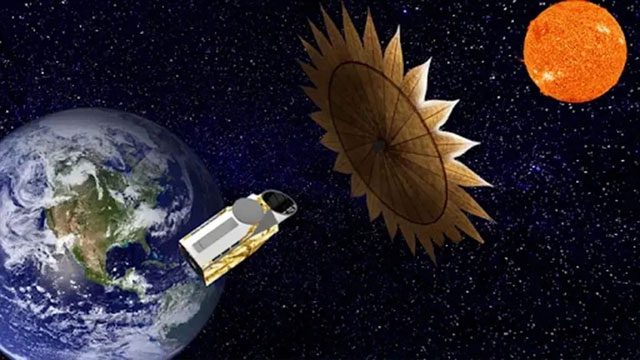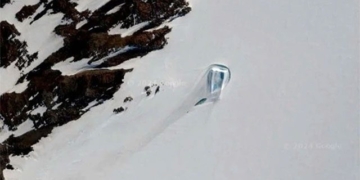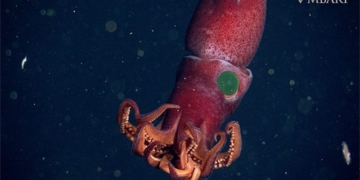NASA Develops Technology to Shield Light from a Star in Search of Signs of Life in Planetary Atmospheres.
Recently, a workshop was held at the California Institute of Technology (Caltech) to discuss technology that could be utilized by the Habitable Worlds Observatory (HWO), one of NASA’s major upcoming telescope projects following the James Webb Space Telescope (JWST). The HWO will scan the atmospheres of exoplanets to search for signs of life.

Illustration showing HWO in orbit around Earth with a starshade deployed. (Image: NASA).
Searching for signs of life on exoplanets is akin to searching for a needle in a haystack. However, scientists at least have some ideas about what to look for and possess certain insights into signs that might indicate life.
Nick Siegler, the technology director of NASA’s Exoplanet Exploration Program, stated in a declaration: “We want to explore the atmospheres of these exoplanets to search for oxygen, methane, water vapor, and other chemicals that could be signs of life. We won’t be detecting little green men, but rather the spectral signatures of these important chemicals, also known as biosignatures.”
To conduct in-depth studies of exoplanet atmospheres, HWO will leverage the ability to block out bright light from the stars around which these exoplanets orbit. This light-blocking capability allows scientists to observe the fainter starlight that reflects off the atmospheres of the exoplanets. The elements and chemical compounds absorb and emit light at specific wavelengths characteristic of their composition, meaning that light interacting with a planet’s atmosphere carries traces of the elements that compose it.
Scientists take this light and use a process called spectroscopy to search for “biosignatures”, which include signs that indicate the chemical compounds that living organisms exhale or inhale.
The Earth-like planets that HWO targets may emit light that is about 10 billion times fainter than the light from their stars. There are two primary methods for HWO to block the bright light from the star. The first method involves using an external light-blocking structure known as a starshade, which deploys into a giant sunflower-shaped umbrella after launch from HWO. Alternatively, an internal light-blocking structure called a coronagraph can be used, similar to tools that scientists use to block light from the solar corona to study the faint atmosphere beyond, or the solar corona.
One of the ideas discussed at the Caltech meeting to enhance the ability to suppress light from a star is to place a deformable mirror inside a coronagraph to manipulate the light rays. Dmitry Mawet, a member of the HWO Technical Assessment Group (TAG), stated: “We need to deform the mirrors with precision down to the picometer level.” He added: “The workshop helped us identify shortcomings in the technology and where we need to further develop over the next decade.”


















































